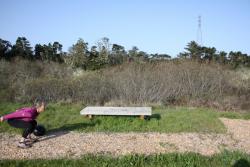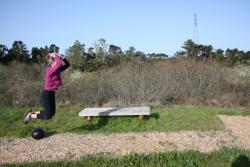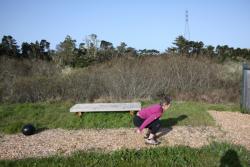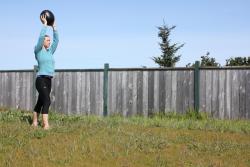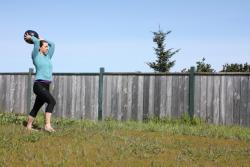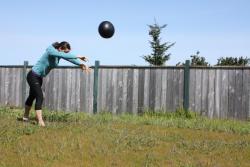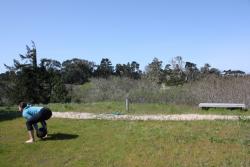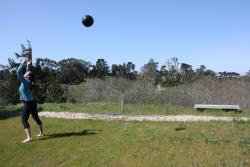Plyo for Power
Strength training, when planned thoughtfully and executed mindfully, can not only improve your swimming, but may also reduce the likelihood of developing over-use injuries, a condition experienced by most athletes at one time or another. Many swimmers express concern that the increased muscle mass resulting from strength training will slow them down. Others fear wasting valuable time, and wonder if strength gains will actually translate to improved swimming performance.
The truth is that it’s doubtful that simple exercises performed on a machine (e.g., leg extensions, bicep curls or pec flyes) are going to significantly improve your swimming. There’s no denying, however, that the ability to generate as much force as possible, just as fast as possible, can pay vast dividends in performance. Selective strength training will help develop power, improve swimming economy, and keep you robust and resilient for years to come.
Plyometric training, originally referred to as “jump training,” helps athletes develop fast, powerful movements by combining speed and strength to produce power and acceleration. Whether launching from the starting platform, exploding off the wall during a turn, or executing the power phase of a stroke, the capacity to generate power can make the difference between being a winner or a finisher. A little plyo training can be a powerful component of a swimmer’s training program; in fact, more than 80% of a swimmer’s performance in a 25-meter freestyle sprint is dependent on an athlete’s strength and power production.
Three relatively simple plyometric drills that swimmers may benefit from are detailed below. Plyo drills should be done no more frequently than once or twice a week, and the volume should be kept low. Because the drills are explosive and high impact, a little goes a long way. Drills should be done prior to a pool session (or on another day entirely), and never after a swim or when fatigued. Be conservative, build slowly and stay injury-free.
Double-Leg Hop
- With feet hip-width apart, squat low
- At the bottom of the squat, immediately spring up and forward, covering as much distance as possible, using the arms to help generate power
- Immediately upon landing in a squat, take off again
- Complete 1-2 sets of 5-10 reps
Overhead Throw (Medicine Ball)
- Note: If the medicine ball is a “bouncer,” this is easiest to do against a wall; if a “non-bouncer,” it can be done either against a wall or in an open area
- Holding a medicine ball overhead, stand with feet hip-width apart, one foot slightly in front of the other and knees slightly bent
- Draw the ball slightly behind head
- Forcefully throw the ball forward as hard as possible while stepping onto front foot
- Catch or retrieve the ball (depending on whether it’s being thrown against a wall) and repeat
- Complete 1-2 sets of 5-10 reps
Backward Throw (Medicine Ball)
- Note: If doing this exercise alone, the ball will need to be retrieved. However, a partner standing behind you can toss the ball back
- Holding a medicine ball with feet slightly wider than hip-width apart, squat low and touch the ball to the ground
- Quickly extending the body, rise up onto the toes and forcefully throw the ball overhead and behind you as far as possible
- Retrieve the ball and repeat
- Complete 1-2 sets of 5-10 reps
Categories:
SIGN UP FOR UPDATES FROM USMS
